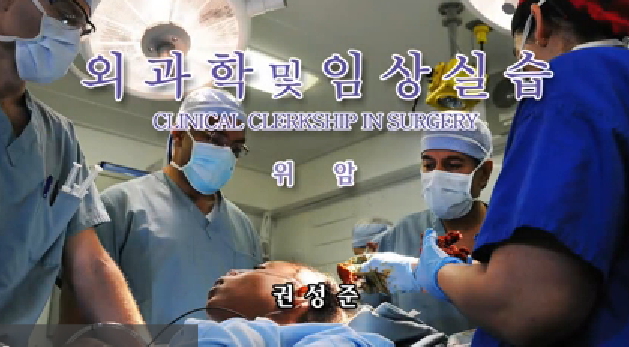Objective : There were variant results for correlation between the postoperative cure rate and valsalva leak point pressure (VLPP) for female stress urinary incontinence (SUI). Therefore the aim of this study was to assess the influence of VLPP on the...
http://chineseinput.net/에서 pinyin(병음)방식으로 중국어를 변환할 수 있습니다.
변환된 중국어를 복사하여 사용하시면 됩니다.
- 中文 을 입력하시려면 zhongwen을 입력하시고 space를누르시면됩니다.
- 北京 을 입력하시려면 beijing을 입력하시고 space를 누르시면 됩니다.
여성 복압성요실금에서 술 전 발살바요누출압에 따른 Suprapubic Arch 술식의 결과 = The Results of Suprapubic Arch Procedure for Female Stress Urinary Incontinence stratified by Preoperative Valsalva Leak Point Pressure
한글로보기https://www.riss.kr/link?id=A76527075
- 저자
- 발행기관
- 학술지명
- 권호사항
-
발행연도
2008
-
작성언어
Korean
- 주제어
-
KDC
510
-
자료형태
학술저널
-
수록면
41-49(9쪽)
- 제공처
-
0
상세조회 -
0
다운로드
부가정보
다국어 초록 (Multilingual Abstract)
Materials and Methods : A retrospective analysis was made of 246 women who underwent SPARC procedure for SUI. Based on VLPP, the patients were divided into 2 groups: group A (VLPP<60cmH2O) and group B (VLPP≥60cmH2O). The objective success rate and subjective success rate were assessed. Before surgery, the patients were evaluated with history taking, physical examination, urinalysis and urodynamic studies. The objective success rate was evaluated by clinical examination and the 1-hour pad test postoperatively and the subjective satisfaction rate was assessed using questionnaires for the patients' satisfaction and evaluated by recommendation rates of SPARC procedure to other patients. The objective success rate included cure and improvement, the subjective success rate included satisfaction and fair.
Results : The number of patients in each group was 145 patients (group A) and 101 patients (group B). The objective success rate was 99.3% (group A) vs 98.0% (group B) (p=0.285). The subjective success rate was 98.6% (groupA) vs 98.0% (group B) (p=0.500). Recommendation rates of SPARC procedure was 94.5% (group A) vs 95.0% (group B) (p=0.422).
Conclusion : It is our belief that SPARC procedure for female SUI is efficacious and safe regardless of preoperative VLPP.
Objective : There were variant results for correlation between the postoperative cure rate and valsalva leak point pressure (VLPP) for female stress urinary incontinence (SUI). Therefore the aim of this study was to assess the influence of VLPP on the outcome of suprapubic arch (SPARC) procedure.
Materials and Methods : A retrospective analysis was made of 246 women who underwent SPARC procedure for SUI. Based on VLPP, the patients were divided into 2 groups: group A (VLPP<60cmH2O) and group B (VLPP≥60cmH2O). The objective success rate and subjective success rate were assessed. Before surgery, the patients were evaluated with history taking, physical examination, urinalysis and urodynamic studies. The objective success rate was evaluated by clinical examination and the 1-hour pad test postoperatively and the subjective satisfaction rate was assessed using questionnaires for the patients' satisfaction and evaluated by recommendation rates of SPARC procedure to other patients. The objective success rate included cure and improvement, the subjective success rate included satisfaction and fair.
Results : The number of patients in each group was 145 patients (group A) and 101 patients (group B). The objective success rate was 99.3% (group A) vs 98.0% (group B) (p=0.285). The subjective success rate was 98.6% (groupA) vs 98.0% (group B) (p=0.500). Recommendation rates of SPARC procedure was 94.5% (group A) vs 95.0% (group B) (p=0.422).
Conclusion : It is our belief that SPARC procedure for female SUI is efficacious and safe regardless of preoperative VLPP.
동일학술지(권/호) 다른 논문
-
다발성 골수종에서 저용량 thalidomide, cyclophosphamide, dexamethasone (TCD) 요법의 효과
- 인제대학교
- 류충헌
- 2008
-
소아 특발성 중추성 요붕증의 임상경과, 내분비학적 소견 및 뇌자기공명 영상 소견의 경과 관찰
- 인제대학교
- 정윤하
- 2008
-
- 인제대학교
- 김성범
- 2008
-
Late and unusual recurrence of gastric cancer presenting as axillary-subclavian venous thrombosis
- 인제대학교
- Kwak, Cheol-Hoon
- 2008




 RISS
RISS





